Family: Pamphiliidae
Family common name: web-spinning and leaf-rolling sawflies
Subfamily: Pamphiliinae
Tribe: Pamphiliini
Genus: Onycholyda Takeuchi, 1938
Subgenera: none
The Pamphiliidae are called the web-spinning and leaf-rolling sawflies because of their shelter-building behavior as larvaelarva:
the immature stage of holometabolous insects
 .
.
Onycholyda species are leaf-rollers. LarvaeLarva:
the immature stage of holometabolous insects
 create rolled tubes of leaf matter and silk to live inside of for protection. The leaf rolls are fairly distinctive, and some species can be recognized by their tube morphology (Middlekauff 1964Middlekauff 1964:
create rolled tubes of leaf matter and silk to live inside of for protection. The leaf rolls are fairly distinctive, and some species can be recognized by their tube morphology (Middlekauff 1964Middlekauff 1964:
Middlekauff WW. 1964. The North American sawflies of the genus Pamphilius (Hymenoptera: Pamphiliidae). University of California Publications in Entomology 38: 1-80.).
There are 40 described species worldwide, all restricted to the Northern Hemisphere. Eight species occur in North America. Onycholyda is most diverse in East Asia (Shinohara and Byun 1993Shinohara and Byun 1993:
Shinohara A and Byun BK. 1993. Pamphiliid sawfly genera Neurotoma and Onycholyda (Hymenoptera, Symphyta) of Korea. Ins. Koreana 10: 75-91., Taeger et al. 2010Taeger et al. 2010:
Taeger A, Blank SM, and Liston AD. 2010. World Catalog of Symphyta (Hymenoptera). Zootaxa 2580: 1-1064.).
A key to North American species of Onycholyda as "Pamphilius" is included in Middlekauff 1964Middlekauff 1964:
Middlekauff WW. 1964. The North American sawflies of the genus Pamphilius (Hymenoptera: Pamphiliidae). University of California Publications in Entomology 38: 1-80..
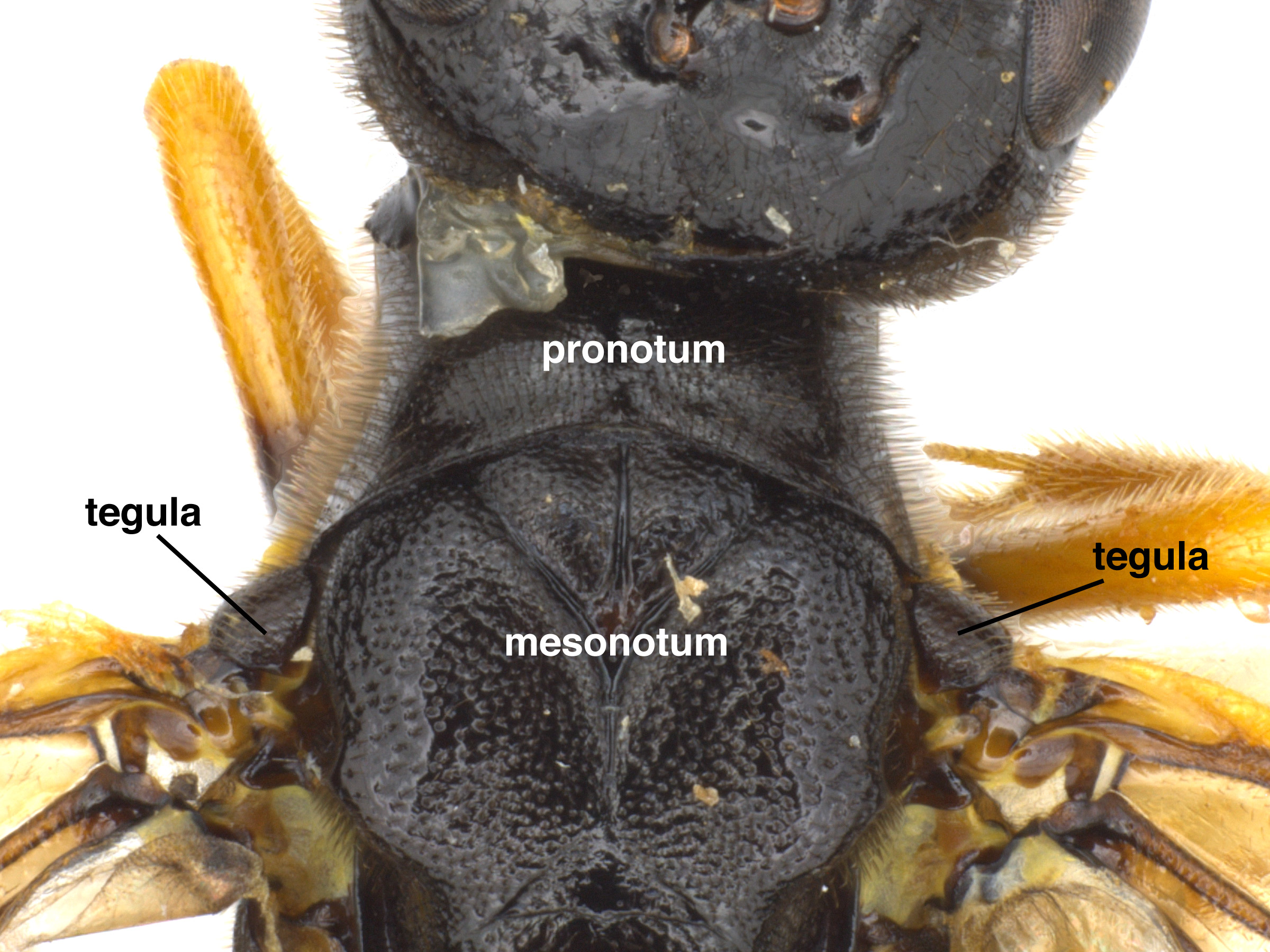 from above slightly constricted, without two distinct faces, more or less evenly flat from the dorsum to the anterioranterior:
from above slightly constricted, without two distinct faces, more or less evenly flat from the dorsum to the anterioranterior: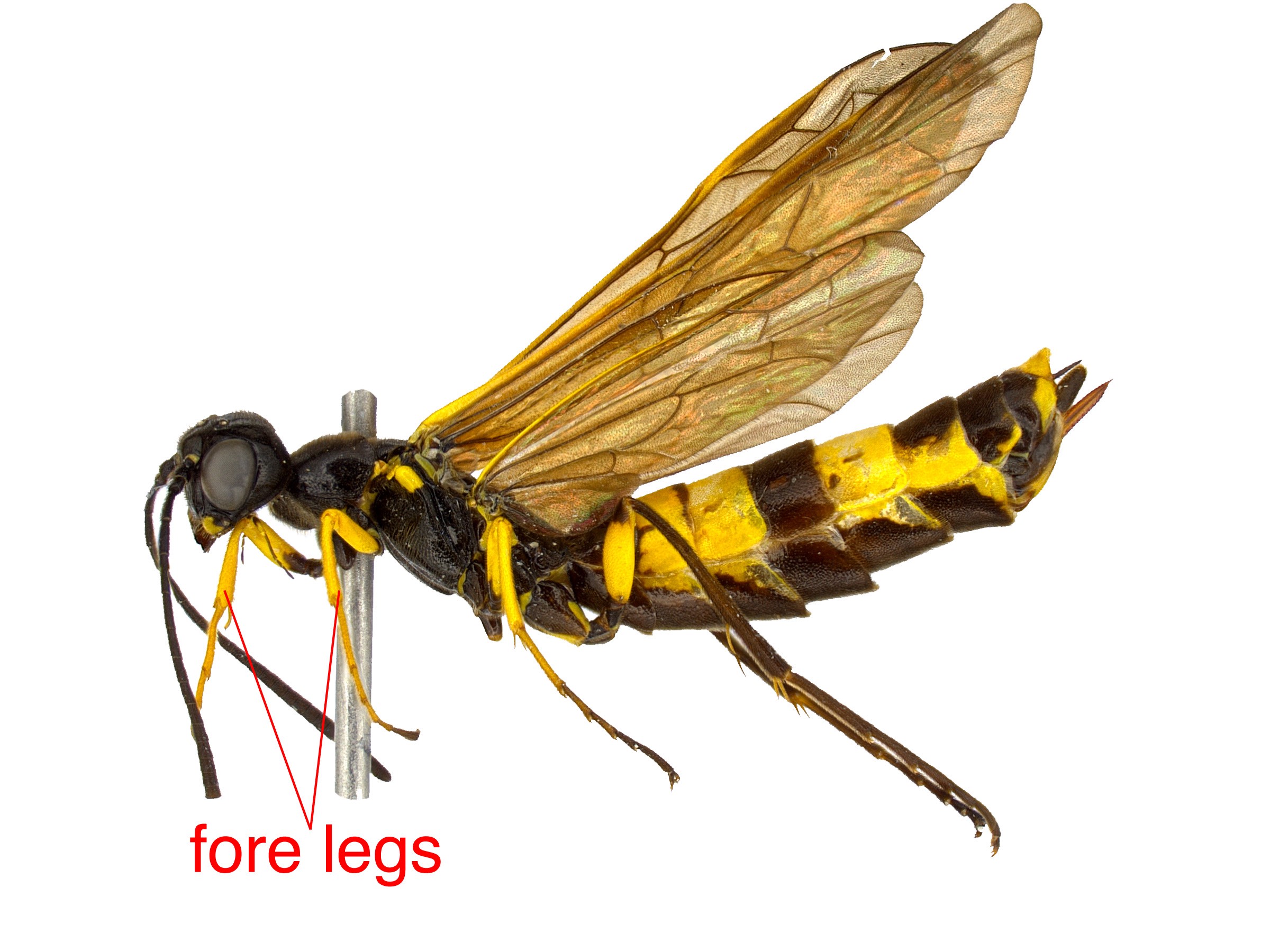 with 2 apicalapical:
with 2 apicalapical: with 3–4 preapicalpreapical:
with 3–4 preapicalpreapical: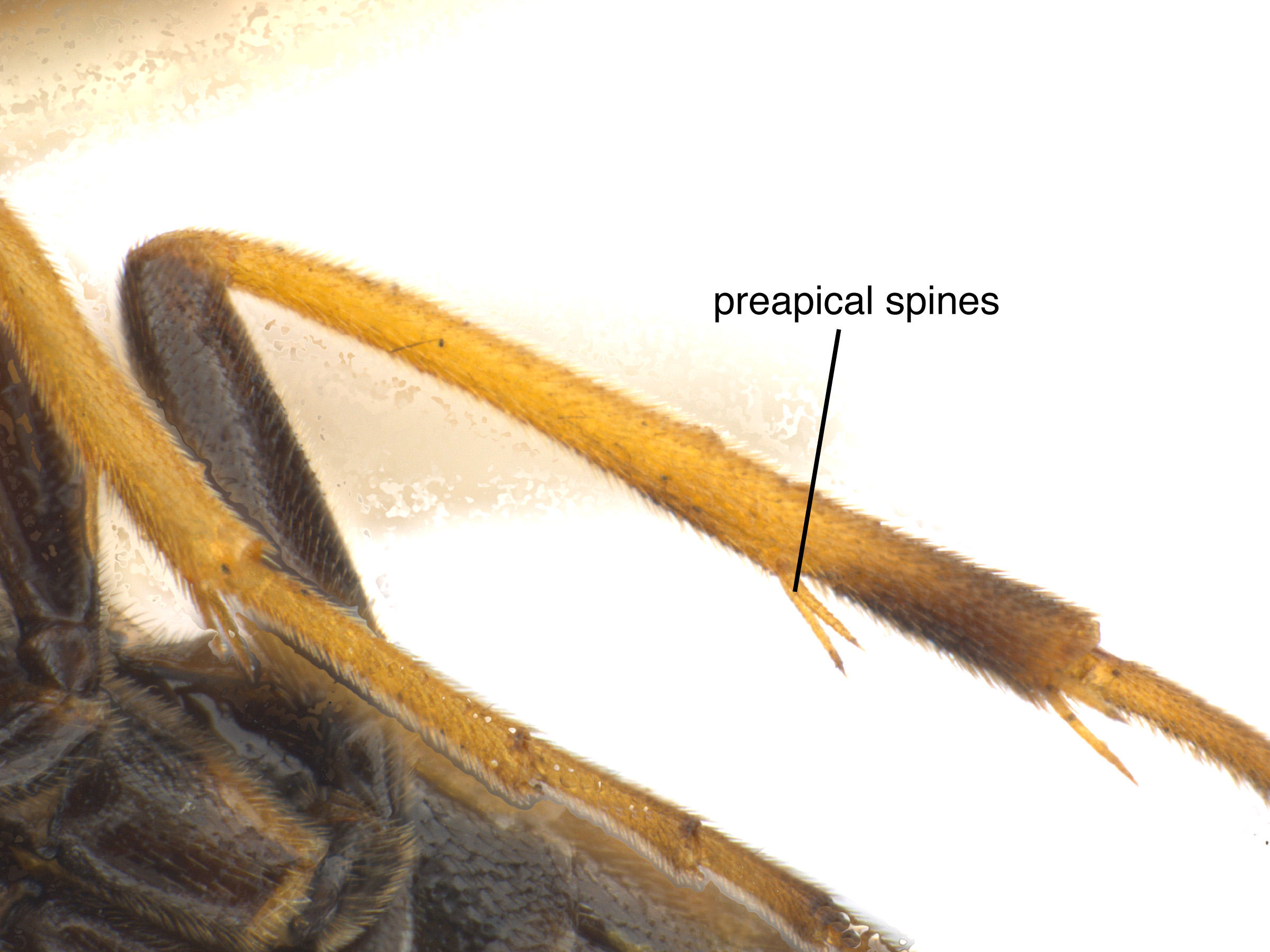 tibial spurs (Goulet 1992Goulet 1992:
tibial spurs (Goulet 1992Goulet 1992: width at basebase:
width at basebase: with large inner tooth near the apexapex:
with large inner tooth near the apexapex: membrane wrinkled horizontally at the apexapex:
membrane wrinkled horizontally at the apexapex: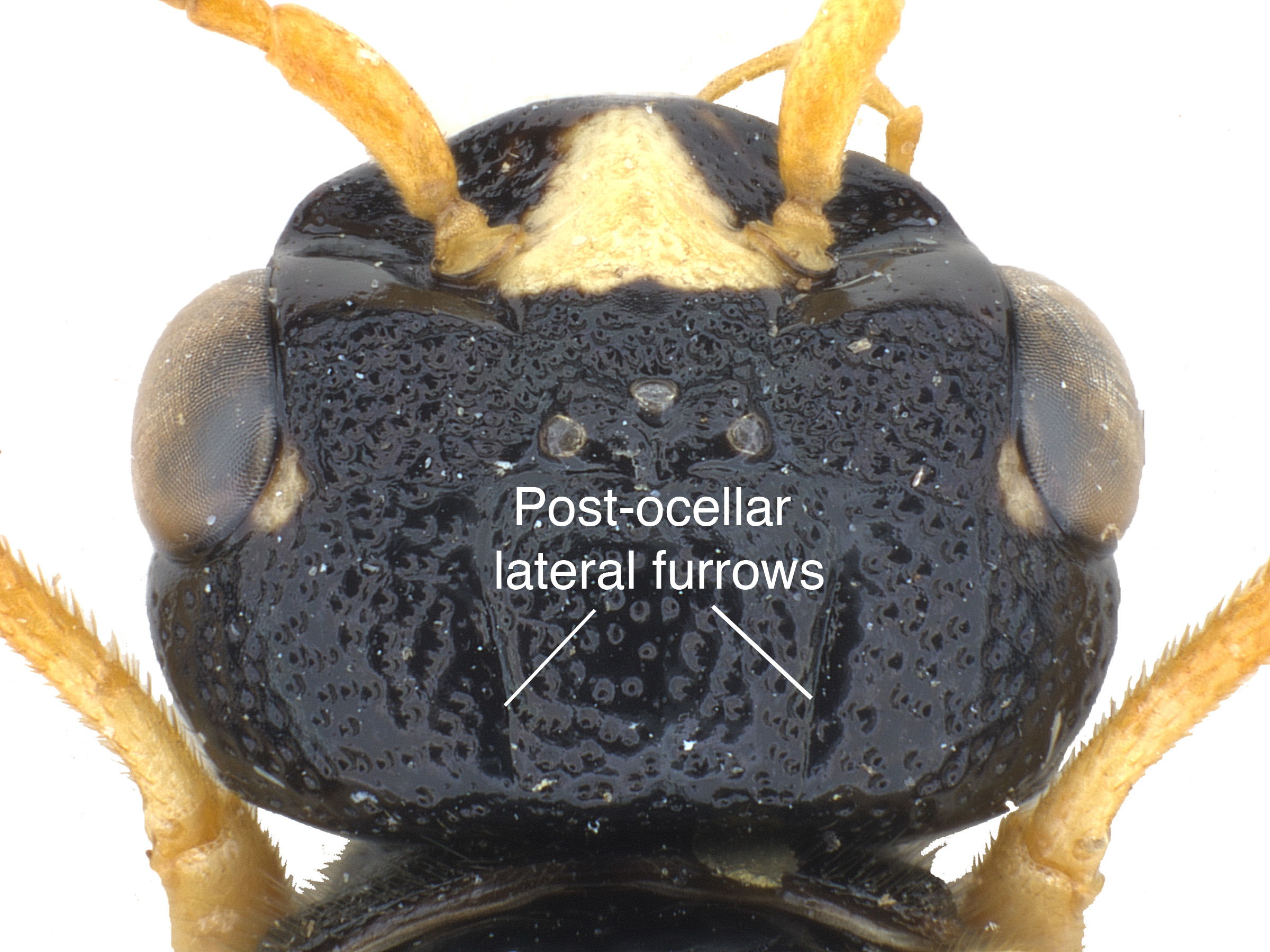 behind the compound eye clearly outlined (Goulet 1992Goulet 1992:
behind the compound eye clearly outlined (Goulet 1992Goulet 1992: Sc1 of the fore wingfore wing:
Sc1 of the fore wingfore wing: present and well-developed (Goulet 1992Goulet 1992:
present and well-developed (Goulet 1992Goulet 1992: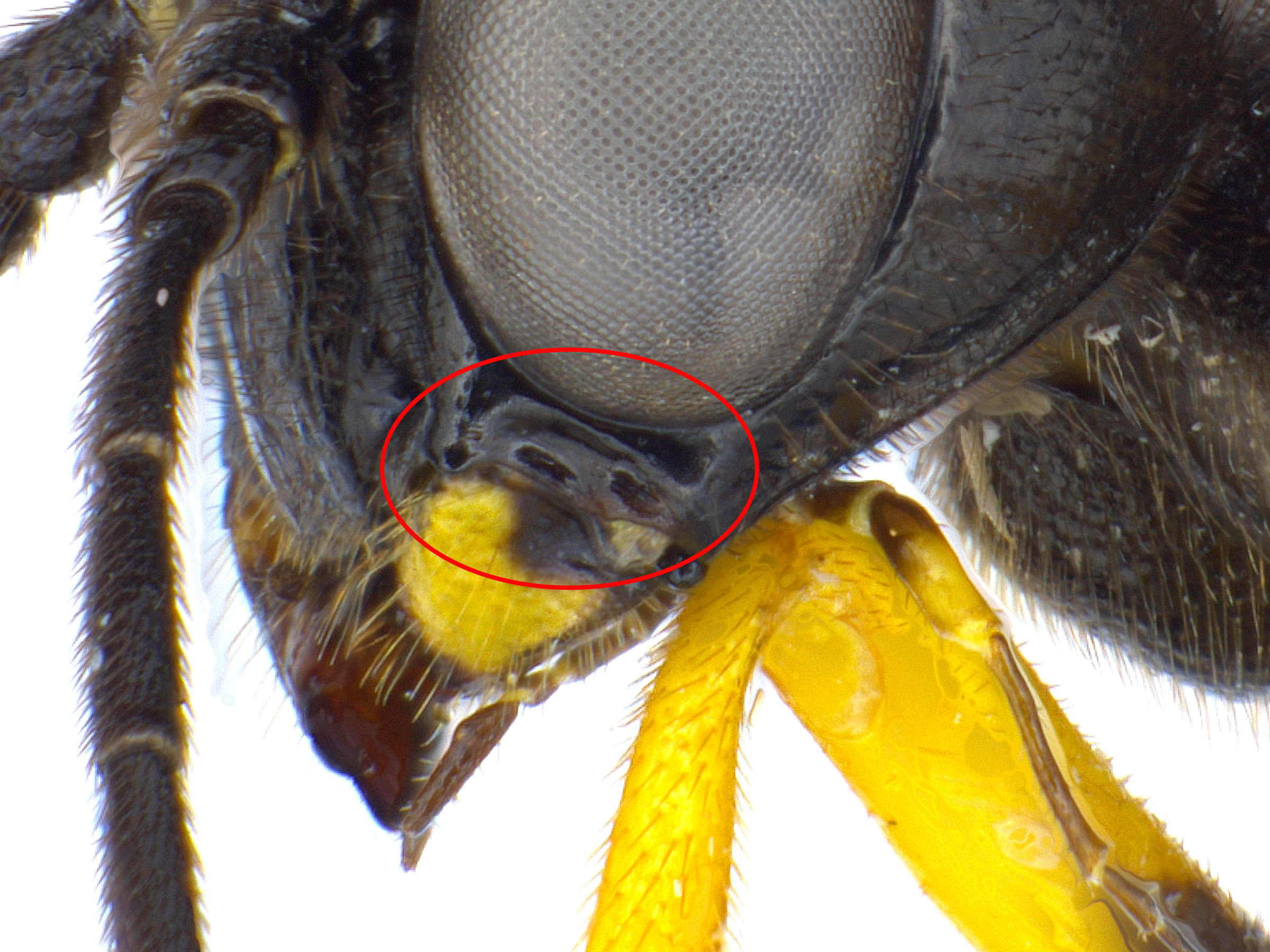 with concaveconcave:
with concaveconcave:Pamphiliidae are recognized by a somewhat large quadratequadrate:
square-like or cube-like in shape
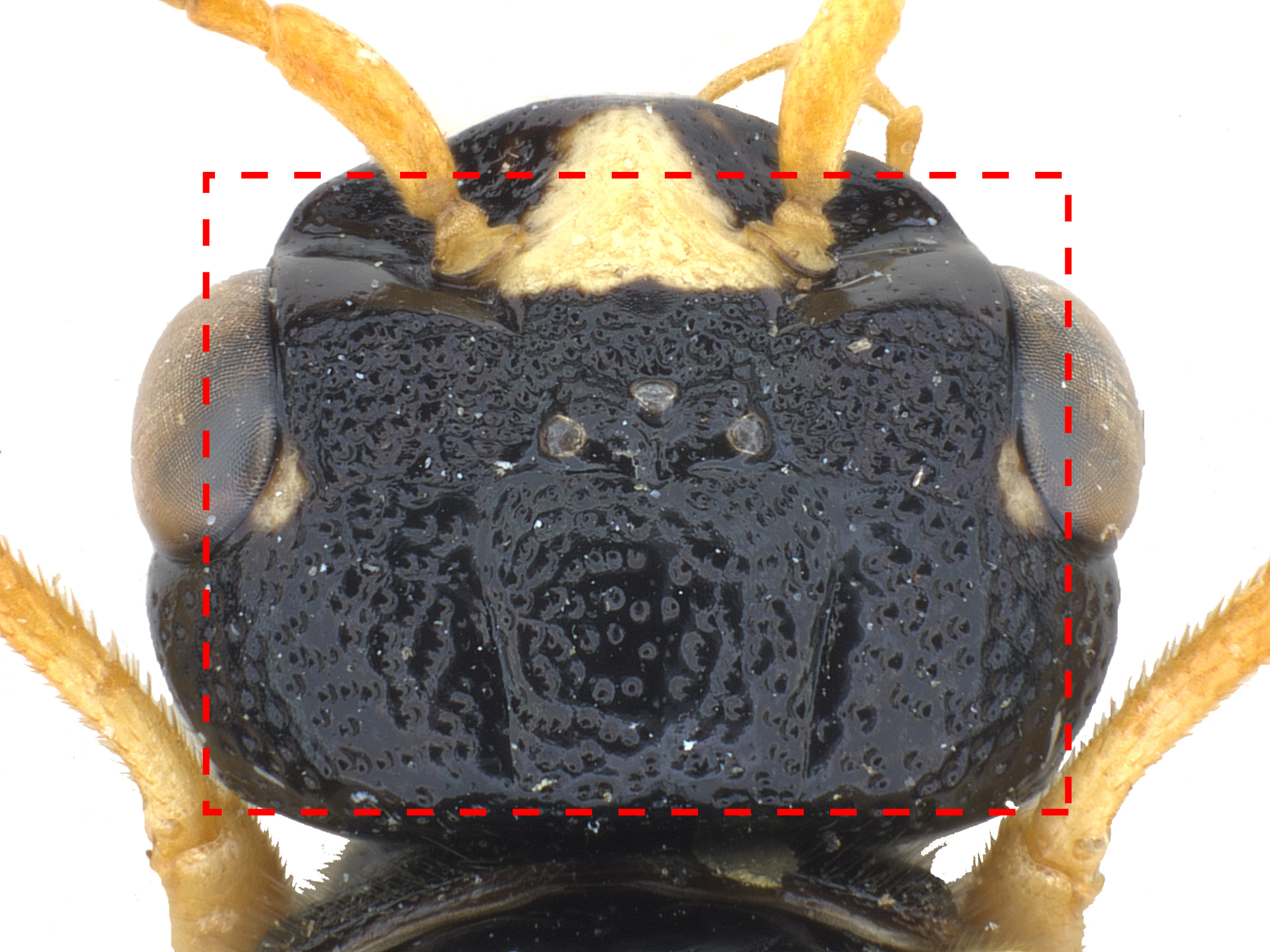 head, elongate filform antennaeantenna:
head, elongate filform antennaeantenna:
the sensory organ emerging from the front of the head, usually between the compound eyes and above the clypeus; includes the flagellum, scape and pedicel
 , and tarsal claws often with inner teeth. Onycholyda can be distinguished from Pamphilius by the presence of hooked setaeseta:
, and tarsal claws often with inner teeth. Onycholyda can be distinguished from Pamphilius by the presence of hooked setaeseta:
hair-like structure
in the malar spacemalar space:
the minimum distance between the base of the mandible and the ventral margin of the compound eye
 , and from other genera by the presence of fore wingfore wing:
, and from other genera by the presence of fore wingfore wing:
the anterior wing of each pair of wings; usually the largest wing of the pair
 vein Sc1 and the tarsal clawtarsal claw:
vein Sc1 and the tarsal clawtarsal claw:
sharpened appendage emerging from the apex of the tarsus
 (Goulet 1992Goulet 1992:
(Goulet 1992Goulet 1992:
Goulet H. 1992. The genera and subgenera of the sawflies of Canada and Alaska: Hymenoptera. Symphyta. The insects and arachnids of Canada. Part 20. Agriculture Canada Publication.).
none
Larvae in North America feed on foliage of Rubus sp. including Rubus parviflorus (thimbleberry), Rubus urninus (trailing blackberry), numerous Rubus cultivars, and also Cornus cornus:
a pointed horn-like process on the apical end of the abdomen in Siricidae sawflies; on tergite 10 in females, sternite 9 in males
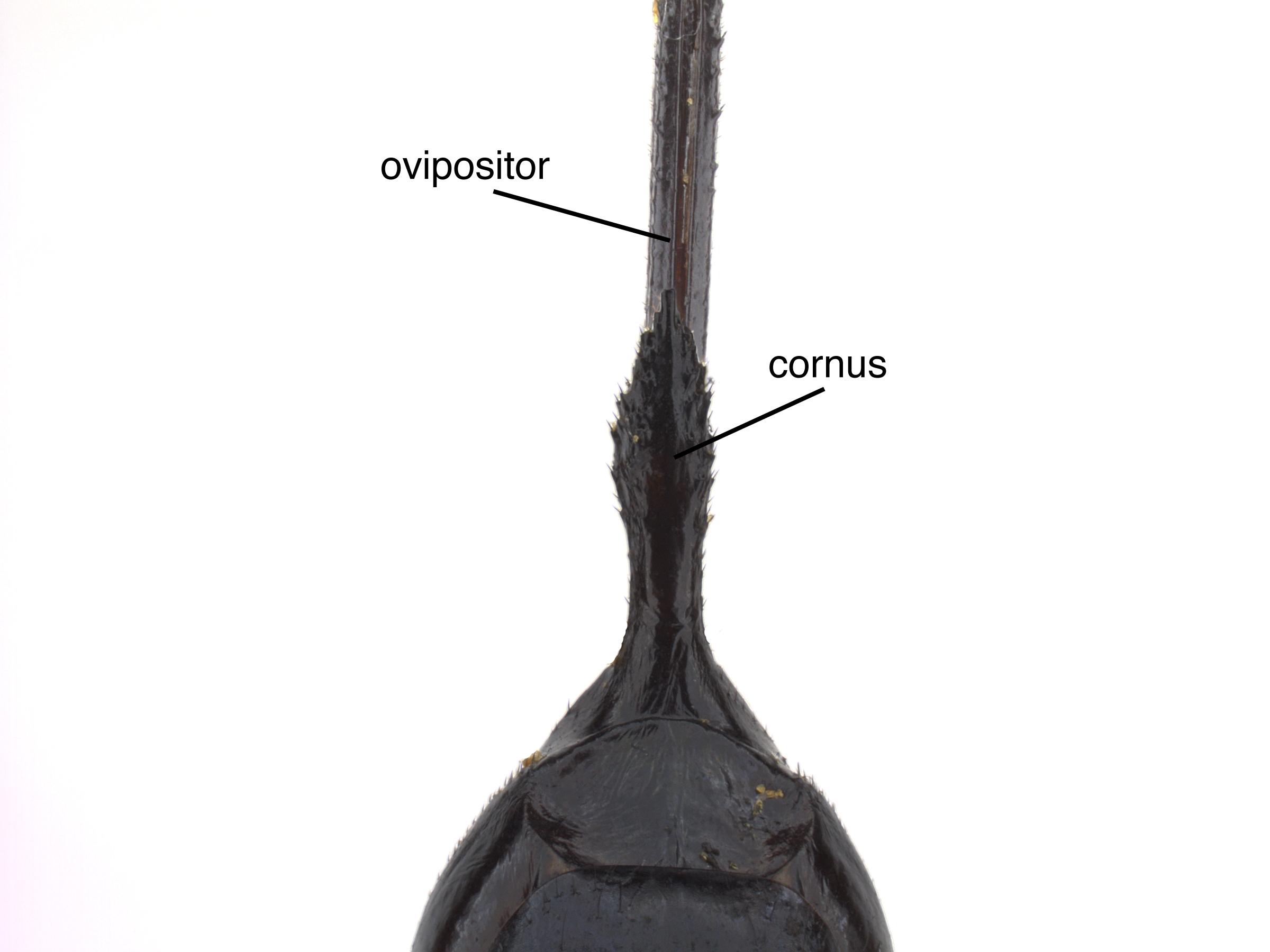 stolonifera (red-osier dogwood) (Middlekauff 1964Middlekauff 1964:
stolonifera (red-osier dogwood) (Middlekauff 1964Middlekauff 1964:
Middlekauff WW. 1964. The North American sawflies of the genus Pamphilius (Hymenoptera: Pamphiliidae). University of California Publications in Entomology 38: 1-80., Shinohara 1985aShinohara 1985a:
Shinohara A. 1985a. The sawfly genus Onycholyda (Hymenoptera, Pamphiliidae) of Japan I. Kontyu, Tokyo 53 (2): 346-359.).
Females oviposit eggs, singly or in groups of up to 12, on the underside of leaves alongside a veinvein:
a tube-like, often darkened, structure on the wings
 . Eggs are slightly cylindrical and white. After hatching, the larvalarva:
. Eggs are slightly cylindrical and white. After hatching, the larvalarva:
the immature stage of holometabolous insects
 begins to roll the leaf into a tube-shaped nest. The leaf tube shape varies across species and may be cone-shaped, corkscrew-shaped, or comprising several leaves clumped together. In all cases, silk is used to cinch the leaf in the preferred position and hold the tube together. The larvaelarva:
begins to roll the leaf into a tube-shaped nest. The leaf tube shape varies across species and may be cone-shaped, corkscrew-shaped, or comprising several leaves clumped together. In all cases, silk is used to cinch the leaf in the preferred position and hold the tube together. The larvaelarva:
the immature stage of holometabolous insects
 generally do not use thoracicthoracic:
generally do not use thoracicthoracic:
of or on the thorax
legs for locomotion and instead use strands of silk to pull their body along a surface, or inch along like a worm. Mature larvaelarva:
the immature stage of holometabolous insects
 fall to the ground and burrow into the soil at a depth of 2–6 inches where they press surrounding soil into a cellcell:
fall to the ground and burrow into the soil at a depth of 2–6 inches where they press surrounding soil into a cellcell:
1. a membranous area of the wing between veins, 2. a small cavity or closed space
 and overwinter. Pupation and emergence occur in the spring (Middlekauff 1964Middlekauff 1964:
and overwinter. Pupation and emergence occur in the spring (Middlekauff 1964Middlekauff 1964:
Middlekauff WW. 1964. The North American sawflies of the genus Pamphilius (Hymenoptera: Pamphiliidae). University of California Publications in Entomology 38: 1-80., Shinohara and Byun 1993Shinohara and Byun 1993:
Shinohara A and Byun BK. 1993. Pamphiliid sawfly genera Neurotoma and Onycholyda (Hymenoptera, Symphyta) of Korea. Ins. Koreana 10: 75-91.).
Adults fly on sunny days during the spring and summer. Onycholyda is generally univoltineunivoltine:
describing an insect with a life cycle of one generation per year
, although there are records of an occasional two-year life cycle (Middlekauff 1964Middlekauff 1964:
Middlekauff WW. 1964. The North American sawflies of the genus Pamphilius (Hymenoptera: Pamphiliidae). University of California Publications in Entomology 38: 1-80.).
World: The genus is widespread throughout northern Asia, including China, Korea, and Japan, west through Russia, and also occurs in Europe and North America (Shinohara 1985aShinohara 1985a:
Shinohara A. 1985a. The sawfly genus Onycholyda (Hymenoptera, Pamphiliidae) of Japan I. Kontyu, Tokyo 53 (2): 346-359., Shinohara and Byun 1993Shinohara and Byun 1993:
Shinohara A and Byun BK. 1993. Pamphiliid sawfly genera Neurotoma and Onycholyda (Hymenoptera, Symphyta) of Korea. Ins. Koreana 10: 75-91., Taeger et al. 2010Taeger et al. 2010:
Taeger A, Blank SM, and Liston AD. 2010. World Catalog of Symphyta (Hymenoptera). Zootaxa 2580: 1-1064.).
North America: Onycholyda is mainly an eastern species with ranges as far south as Florida, north to Ontario, and west through the northern Midwest. One species, O. sitkensis, also occurs on the Northwest Coast north to Alaska (Middlekauff 1964Middlekauff 1964:
Middlekauff WW. 1964. The North American sawflies of the genus Pamphilius (Hymenoptera: Pamphiliidae). University of California Publications in Entomology 38: 1-80.).
Map data from: GBIF.org (26 June 2019) GBIF Occurrence Download Onycholyda
Details about data used for maps can be found here.